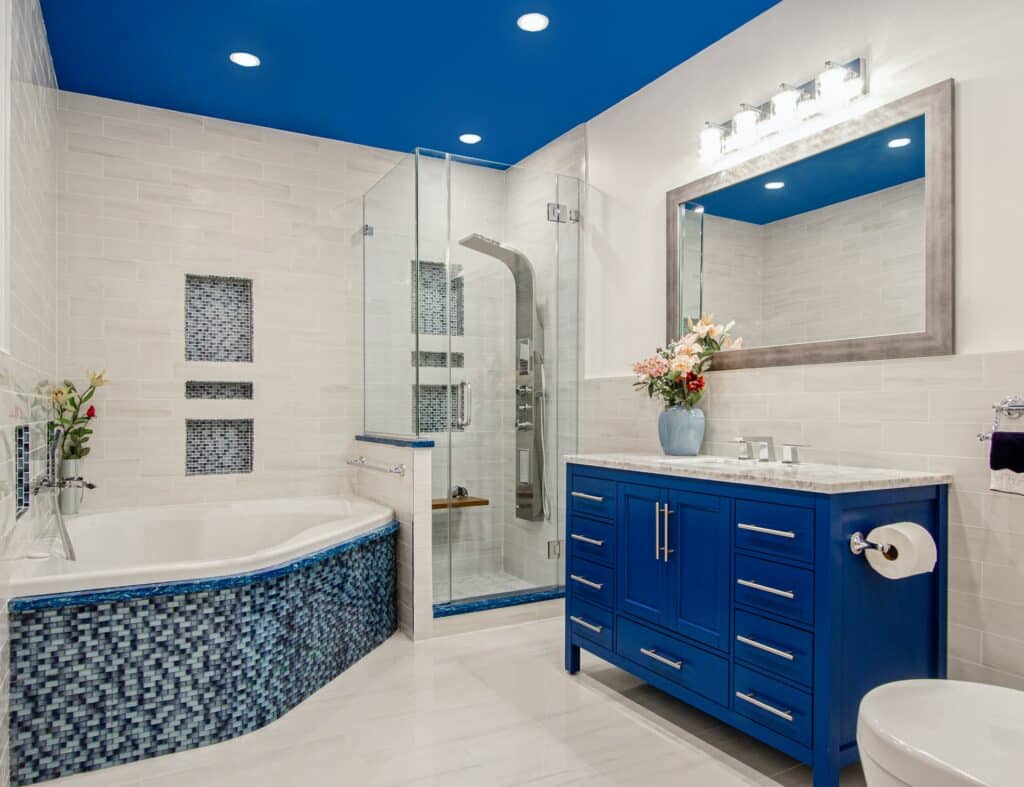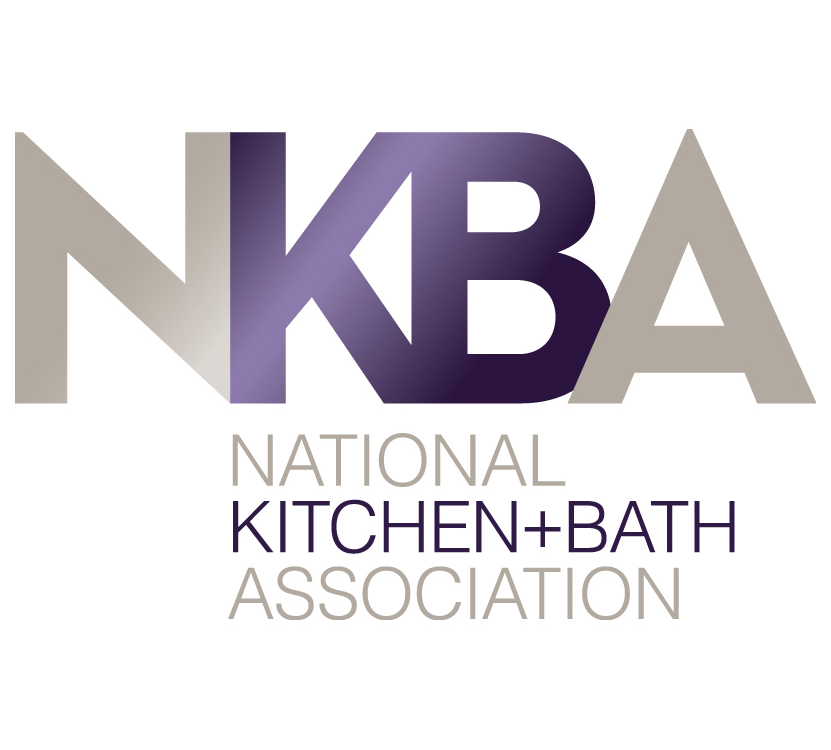
Renovating a bathroom can make an old space feel brand new, but it can feel like a tremendous undertaking too. That’s why we’ve put together expert bathroom remodel tips to help you plan and perfect the ultimate bathroom renovation. Read on to see what the pros have to say.
Tips for Planning a Bathroom Renovation
From new fixtures and plumbing updates to wallpaper and tiling options, there’s a lot to keep in mind when renovating. Proactive planning can help you save big by avoiding unforeseen costs and unnecessary work. Before you start gutting that outdated privy, keep the following in mind:
- Consider your lifestyle and daily routine before all else. It’s no use shelling out for a luxury bathtub when you’re more likely to stick to quick morning showers.
- Establish your budget and stick to it, leaving room for unexpected costs or repairs.
- Note anything that’s not working in your current setup and see if you can improve in these areas. This includes planning around storage needs and always putting function over style.
- Factor the number of people who use the bathroom into your plan. A double sink setup can help save time and avoid elbow wars when it’s time to get ready.
- Plan your bathroom’s new layout upfront and avoid making last minute changes once renovations have started.
- Avoid unnecessary changes to existing fixtures, as this will likely increase plumbing costs.
- Get a trusted plumber and electrician on board for any necessary repiping, rewiring or new lighting installations.
- Check your design with any trade professionals who will need to perform work (including a tiler, unless you plan to DIY) to make sure there won’t be any issues.
- When replacing bathroom fixtures, be sure to select and purchase those first. This ensures installations or alterations like hot and cold pipes are in the correct positions and that your new fixtures will fit.
- Instead of replacing a bathtub outright, consider re-enameling or replacing tub surrounds for a new look at a fraction of the cost.
Choosing New Materials For a Bathroom Renovation
From intricate wallpaper designs and waterproof paint to natural stone, selecting new materials for your bathroom can be a fun and daunting process. It’s important to ensure all materials are appropriate for use in bathroom settings. Let’s break down a few surfacing options to get you started.
Bathroom Remodel: Porcelain Tiles
Porcelain tiles are a popular choice for bathroom walls, flooring and shower surrounds. That’s because they are durable, colorfast, highly water-resistant and easy to clean. This budget-friendly, man made option is made from clay and fired at a high temperature. Porcelain tiles are available in a wide range of natural or man made colors and pattern options and can even be made to mimic the look of natural stone or woodgrain. Glazed porcelain tiles are inherently non-porous, which makes them appropriate for use in wet settings. Unglazed porcelain tiles are porous and need to be sealed regularly to protect against stains and moisture damage. To learn more, check out our guide to glazed vs. unglazed tiles.
Bathroom Remodel: Natural Stone Tiles
The look of natural stone might as well be synonymous with luxury. Whether you opt for a natural stone vanity countertop or stone tiling, this gorgeous material will elevate your new bathroom to levels of spa-like bliss. Bold colors and dramatic patterns can help create highly-effective accent areas, while serene hues and intricate veining creates a sense of calm and relaxation. The benefits of using natural stone in bathroom settings include:
- Durability—stones like granite are highly-durable and make for an excellent long-term investment.
- Aesthetics—while porcelain tiles can mimic the look of natural stone, nothing beats the real thing. Installing natural stone features can create a unique look and increase your home’s value.
- Non-Slip Properties—opting for a textured stone can reduce the risk of slipping and falling in wet areas, such as bathrooms, kitchens and pool surrounds.
- Heat Retention—natural stones like soapstone have the ability to retain and radiate heat, which is a desirable quality in the winter and in bathrooms with heated floors.
- Water-Resistant When Sealed—most types of natural stone will need to be sealed regularly to protect against moisture damage, but sealed natural stone has the benefit of easy maintenance—just be sure to use appropriate cleaners.
Bathroom Remodel: 3 Pro Design Tips
There are countless design styles that can help create the perfect bathroom sanctuary. These 3 design tips will go a long way towards making your bathroom remodel shine:
- Use large mirrors to make a small bathroom feel bigger.
- Limit your color palette to three hues and use the 60-30-10 rule—60% of the room should utilize your dominant color, 30% your secondary color and 10% your accent color.
- Waterproof vulnerable areas with tile backer boards and proper caulking upon installation and be sure to select waterproof paints and wallpaper that can withstand moist bathroom conditions.
Work with Cosmos!
If you have any questions about selecting surface materials for your bathroom remodel, reach out to Cosmos today! We bring decades of expertise to the table, and our pro team is always happy to help!
Color of the Month: Juniper Berry
Juniper Berry is a deep billiard green with azure undertones. Pair with touches of gold and off-white for a traditional theme in any kind of room.
Like black soapstone, jade soapstone has a deep and dark color, rich in its elegance. Its sleek appearance matches its smoothly honed finish. Jade soapstone’s cool color makes it great for countertops and fireplaces, as well as backsplashes and poolside bars. Jade soapstone matches well with soft grays and wood alike.
Bands of grey and veins of white create a wavy pattern reminiscent of the moon-lit sea. The distinctive layers add depth to the black background that is characteristic of the Agatha granite.












